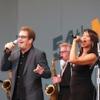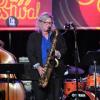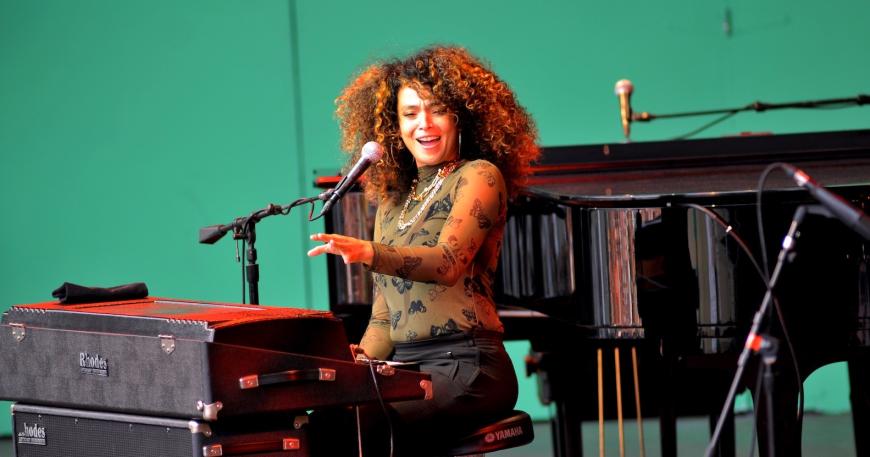
The Monterey Jazz Festival was always too much. Too much music, too much food, and too much beauty packed into 22 bucolic acres. And I loved it. By midsummer, it took an act of will not to spend an inordinate amount of time on the festival’s website mapping various strategies to see as many sets as possible while mentally ticking off the days until the third full weekend in September.
The sheer overwhelming abundance amid the oak-shaded Monterey County Fairgrounds was what made it the West Coast’s pinnacle jazz experience, a nonpareil status enhanced by savvy booking decisions and well-tended traditions honed during its 62-year run as the world’s longest continuously operating jazz festival. But like just about every other music festival, Monterey went on hiatus as an in-person event in 2020, and the decision to return to the fairgrounds on Sept. 24–26 was fraught with uncertainty, and not just because the summer surge of the Delta variant led many presenters to cancel or revamp their plans.
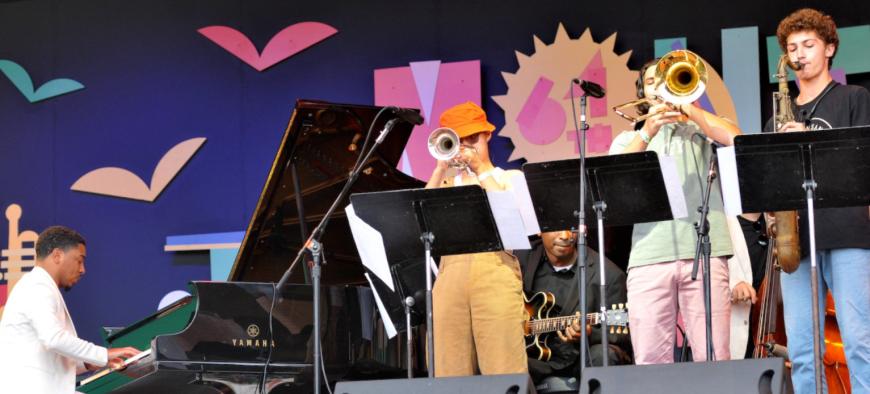
Rather than offering music concurrently in five to seven venues, the festival radically slimmed down, using only two outdoor stages, alternating sets between the main arena (a stadium designed for rodeos and horse shows) and a previously neglected space in the food courtyard where musicians performed on a tiny concrete island surrounded by a sad, fountain-fed moat. Jazz fans, who were impressively diligent about masking, didn’t seem fazed by a version of Monterey with less than a fifth of the regular number of musicians. Tickets, which were reduced from about 35,000 to 7,500, sold out months before the festival, and my sense from listening to conversations around the fairgrounds was that a much smaller percentage of people came from outside the region than in previous years.
One misguided Southern California jazz critic, disdaining the abbreviated programming, denounced the whole affair as a travesty. In his mind, Monterey is defined by abundance. I’ve reveled in the overwhelming experience too, but this year’s festival manifested numerous ways in which a smaller footprint can provide a deeper experience. Less music offered more opportunities to hear musicians in several contexts, a lesson that I hope the festival builds on if and when it returns to its cornucopian ways.
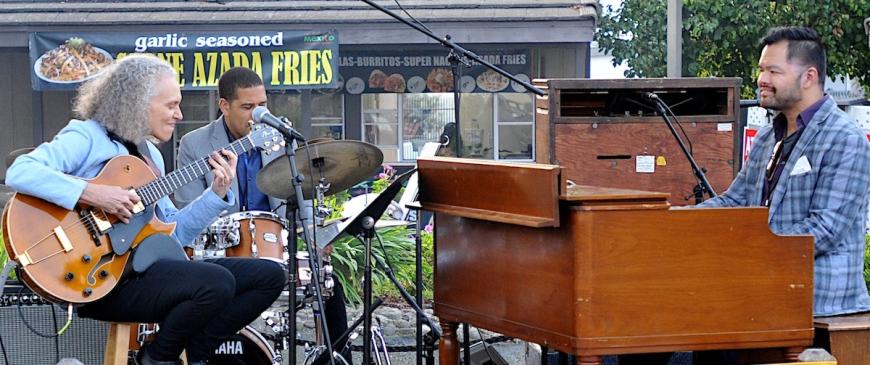
More than ever before, after attending Monterey religiously for nearly three decades, I experienced this year’s festival as a glimpse into the music’s future, and the view was often enthralling. From preternaturally poised high school students to age-defying veteran masters surrounding themselves with brilliant upstarts, the talent displayed by millennial and Gen Z musicians was positively inspiring.
That said, the youth wave got off to a slow start with Friday’s three-act program. Guitarist Mimi Fox, an esteemed Bay Area artist, sounded unaffected by the pandemic layoff over the course of three brief courtyard sets with drummer Lorca Hart and Brian Ho on Hamond B-3 organ. A major voice on the guitar for some three decades, she offered a full instrumental spectrum, strumming lush chorded ballads and whipping out fierce single-note lines. The high point was a hurtling version of Wes Montgomery’s “Four on Six” that generated more power than the small jet planes roaring overhead from the adjacent airport.
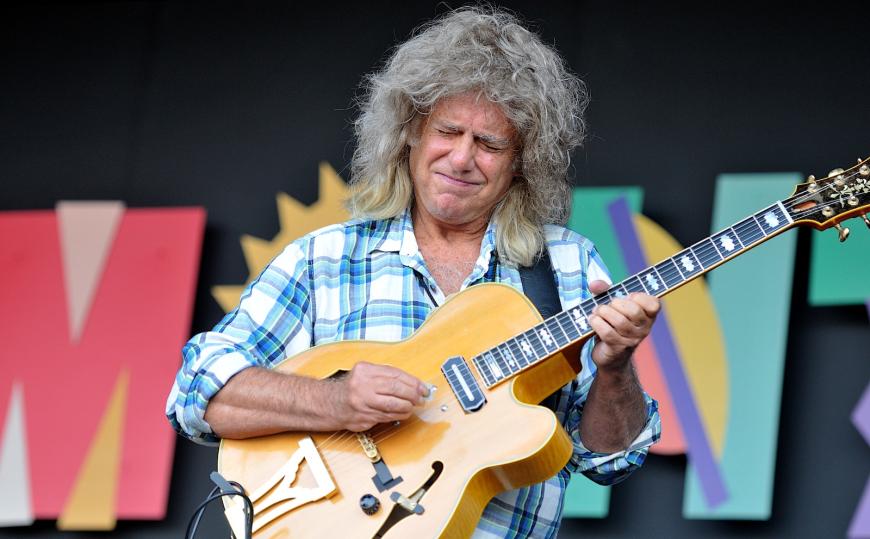
In the arena, Pat Metheny shoehorned an astounding array of tunes into a 70-minute set. His new trio Side-Eye with Houston keyboardist James Francies and New Orleans drummer Joe Dyson is still a work in progress, but the group is already playing at rarified heights. Often segueing seamlessly from one Metheny tune to another, the trio gave a master class in building tension and release by varying texture, tone, and dynamics. Ever the technophile, Metheny seemed to have repurposed some of the instruments from his Orchestrion Project, which he appeared to control via his guitar. Even considering that Francie was barricaded behind multiple keyboards, figuring out who was responsible for which sounds at times was an impossible task.
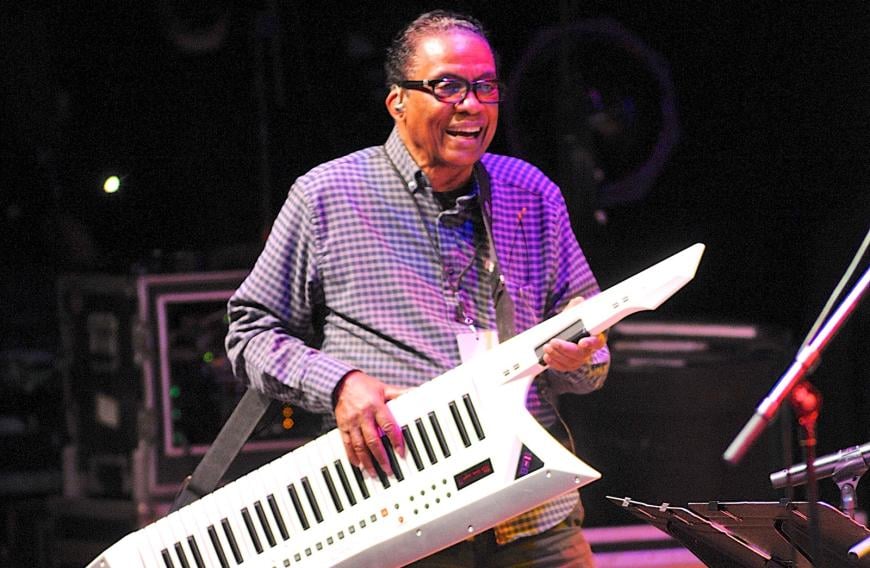
The keyboard fortress remained on stage for Herbie Hancock, and the 81-year-old icon practically sprinted over to the rig, looking and sounding decades younger than his 81 years. His talent-packed band featured longtime collaborator Lionel Loueke on guitar and vocals, bassist James Genus, Elena Pinderhughes on flute and vocals and the very impressive young drummer Justin Tyson. Drawing on beloved material from different stages in his career, like Blue Note-mainstay “Butterfly” and Headhunters era “Actual Proof,” his crowd-pleasing set rarely rose to a memorable height. The program called out for a solo piano number or a duet with Pinderhughes, who provided the set’s most riveting moment playing the famous riff to Hancock’s breakthrough 1962 hit “Watermelon Man.”
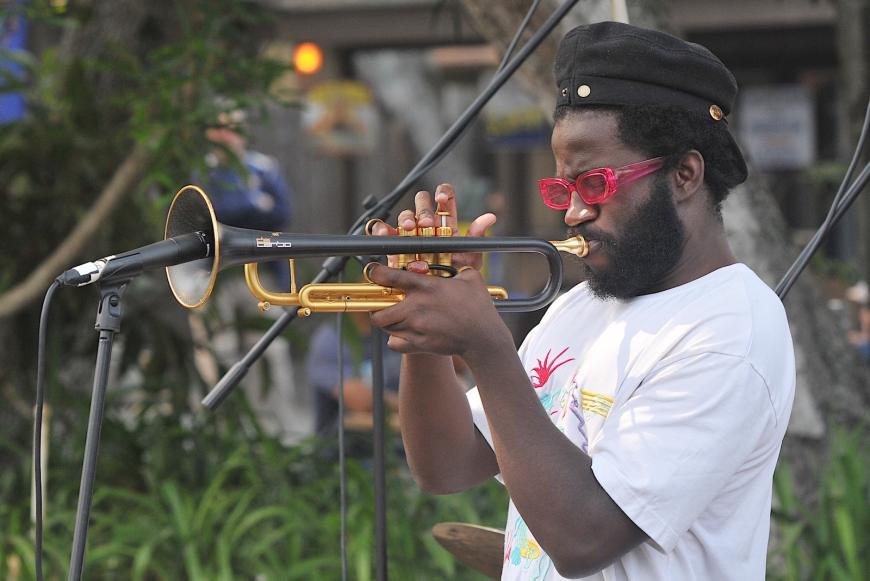
Saturday was all about the kids, starting with the remarkable young trumpeter Giveton Gelin, who’s in his early 20s and hails from the Bahamas. Over the course of four 30-minute sets on the courtyard stage with his quartet featuring bassist Philip Norris, drummer Kayvon Gordon, and pianist Micah Thomas (another extraordinary talent), he displayed an appealingly dry, fine-grained tone and a seemingly bottomless reserve of melodic phrases. Much like his mentor Eddie Henderson, he prefers the horn’s midrange, revealing the infinite variety of inflections with which a note can be placed.
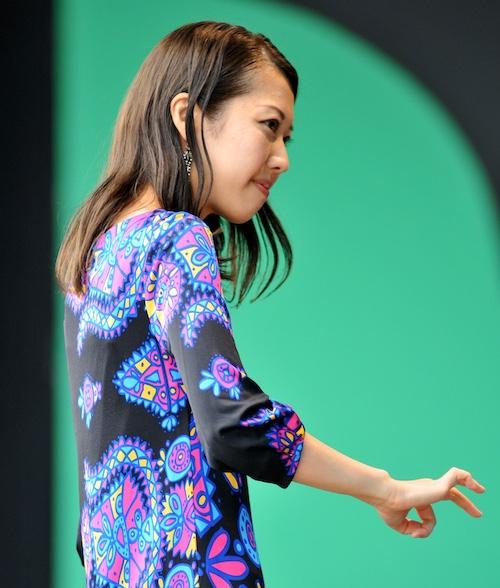
In the arena, Japanese composer and conductor Miho Hazama and her chamber orchestra M Unit offered a thrilling set of her original pieces that effectively blended (or contrasted) the strings and brass. Her festival commission, the three-part Planet Suite was equally programmatic and impressionistic, evoking cosmic phenomena (with the off-kilter “Elliptical Orbit”) and beatific wonder (“Planet Nine”). Soloing with power and concision, tenor saxophonist Jason Rigby provided some of the ensemble’s most exciting moments.
The pandemic’s inescapable shadow forced a last-minute cancellation when three members of the Los Angeles Mexican roots music combo Las Cafeteras tested positive for COVID-19. Pianist Gerald Clayton assembled a band from available players and filled in with a quintet featuring drum maestro Eric Harland. Starting with an impromptu theme vaguely reminiscent of Miles Davis’s In a Silent Way, the set never really came into focus, though it did offer the first encounter with alto saxophonist Immanuel Wilkins, who came to feel like an old familiar friend by the end of the weekend.
In a conversation on the fairgrounds Tim Jackson, Monterey’s longtime artistic director, said that trumpeter Terence Blanchard holds the unofficial record for most appearances through the course of a festival. The 24-year-old Wilkins, whose Blue Note album Omega was 2020’s most acclaimed debut release, is a strong contender for second place. The undisputed belle of the ball, he participated in eight different sets by my count, and during the one tune he sat in and expertly blended with Giveton Gelin’s trumpet, Wilkins made a much deeper impression than during the arena set with Clayton.
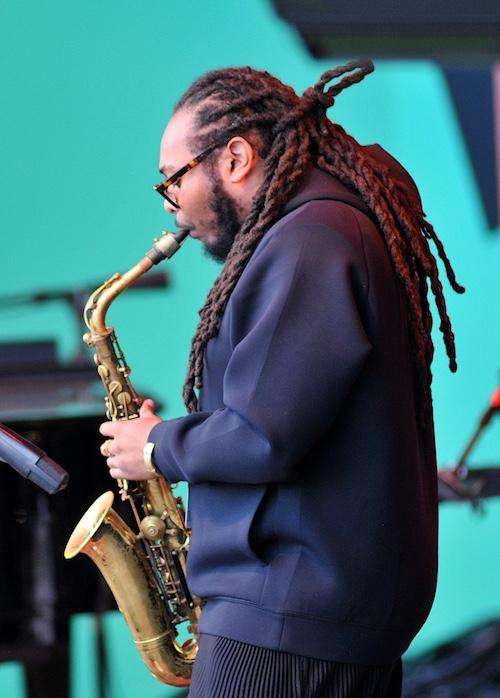
Wilkins didn’t get much rest on Sunday, when he led a quartet with pianist Micah Thomas, who returned to the courtyard stage after the previous day’s run with Gelin and once again made it evident why he’s one of jazz’s most highly regarded young players. Over the course of four sets, Wilkins balanced a mathematical bent with a thick, pliable, and inviting tone. As a guest soloist he provided another jolt of energy to the Next Generation Jazz Orchestra conducted by Clayton in the arena (not that the high schoolers needed a boost), but he was particularly effective as a foil for Nashville keyboardist and vocalist Kandace Springs, whose trio with bassist/vocalist Caylen Bryant and drummer/vocalist Taylor Moore delivered the festival’s most entertaining set. With her effortless charisma and velvet-soul vocals Springs put her own stamp on jazz, bossa nova and pop standards (with Wilkins shadowing her on Mal Waldron’s “Soul Eyes” she kept the molasses tempo taut and rapturous).
Another revelation was trumpeter Skylar Tang, a sophomore at Crystal Springs Uplands School in San Mateo. She sounded strong and confident on a short set Sunday in the courtyard with the Next Generation Women in Jazz Combo, a quintet directed by bassist/vocalist Katie Thiroux. Tang sounded even more impressive as a guest soloist with pianist Christian Sands and a featured soloist with the Next Generation Jazz Orchestra, directed by Clayton with all the physicality and some of the body English employed by his father (John Clayton, bassist and co-leader of Clayton Hamilton Jazz Orchestra). Maybe the kids spent all their time sheltering in place practicing, or maybe the genial and ingenious Clayton knows how to put young musicians at ease (or both). The Next Gen Orchestra started strong and kept the momentum fierce, culminating in a stomping version of Charles Mingus’s “Moanin’” featuring Walnut Creek baritone saxophonist Noa Zebley, who leaned into the piece like she was trying to save souls. Wow.
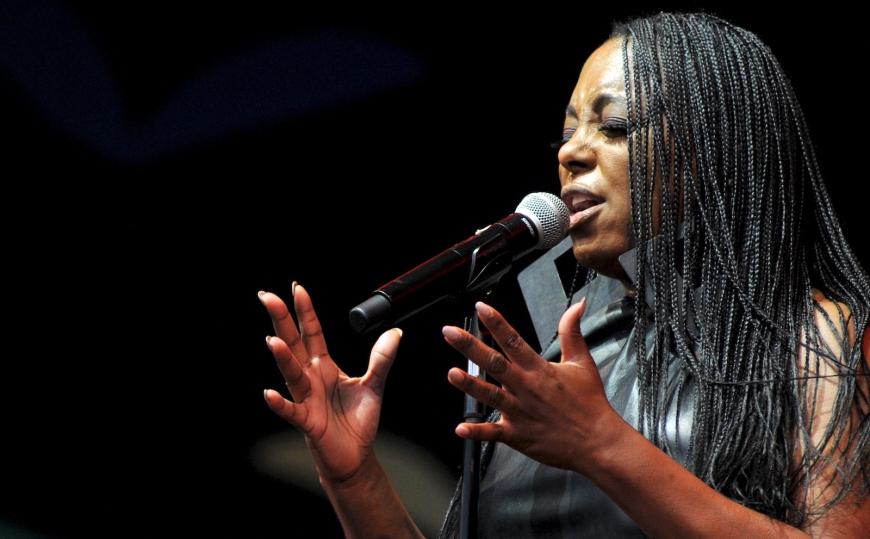
The festival’s other high point was Ledisi, who took the stage like a soul queen and held court with all the generosity and capriciousness that can come with royalty. She focused on her original songs, turning “It’s Alright” into an extended affirmation, and her recent Grammy-Award-winning “Anything For You” into an imploring declaration. She touched on her new album of songs associated with Nina Simone by creating winding a potent version of “Baltimore” into her original piece “Shot Down.” An uncontainable talent, Ledisi earned three or four standing ovations before she was done, and if it was weird for the music to end well before dark, I’m sure many musicians were grateful they didn’t have to follow her on stage.
A much smaller footprint wasn’t ideal for Monterey, but holding a successful jazz festival was one giant step for a scene that aching for a return to normalcy. There are definitely lessons from MJF64 that could enrich next year’s festival.


